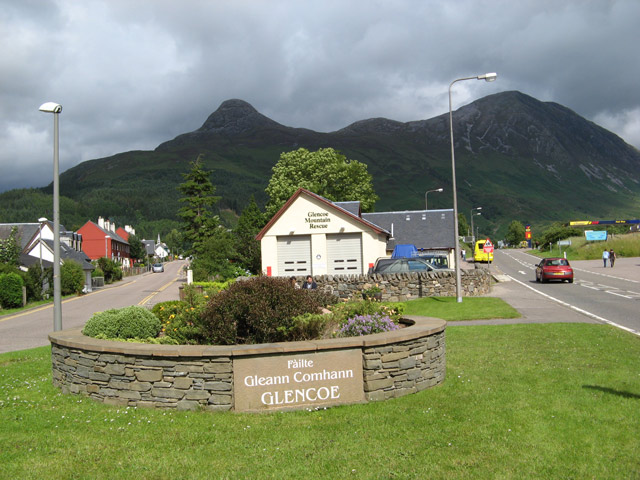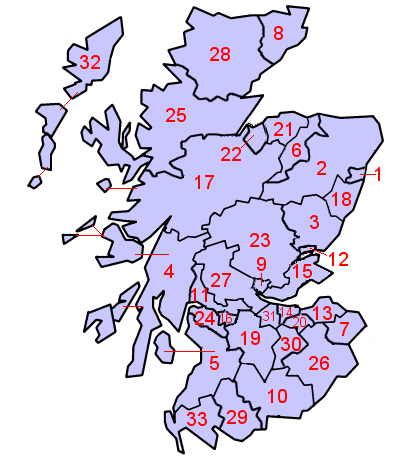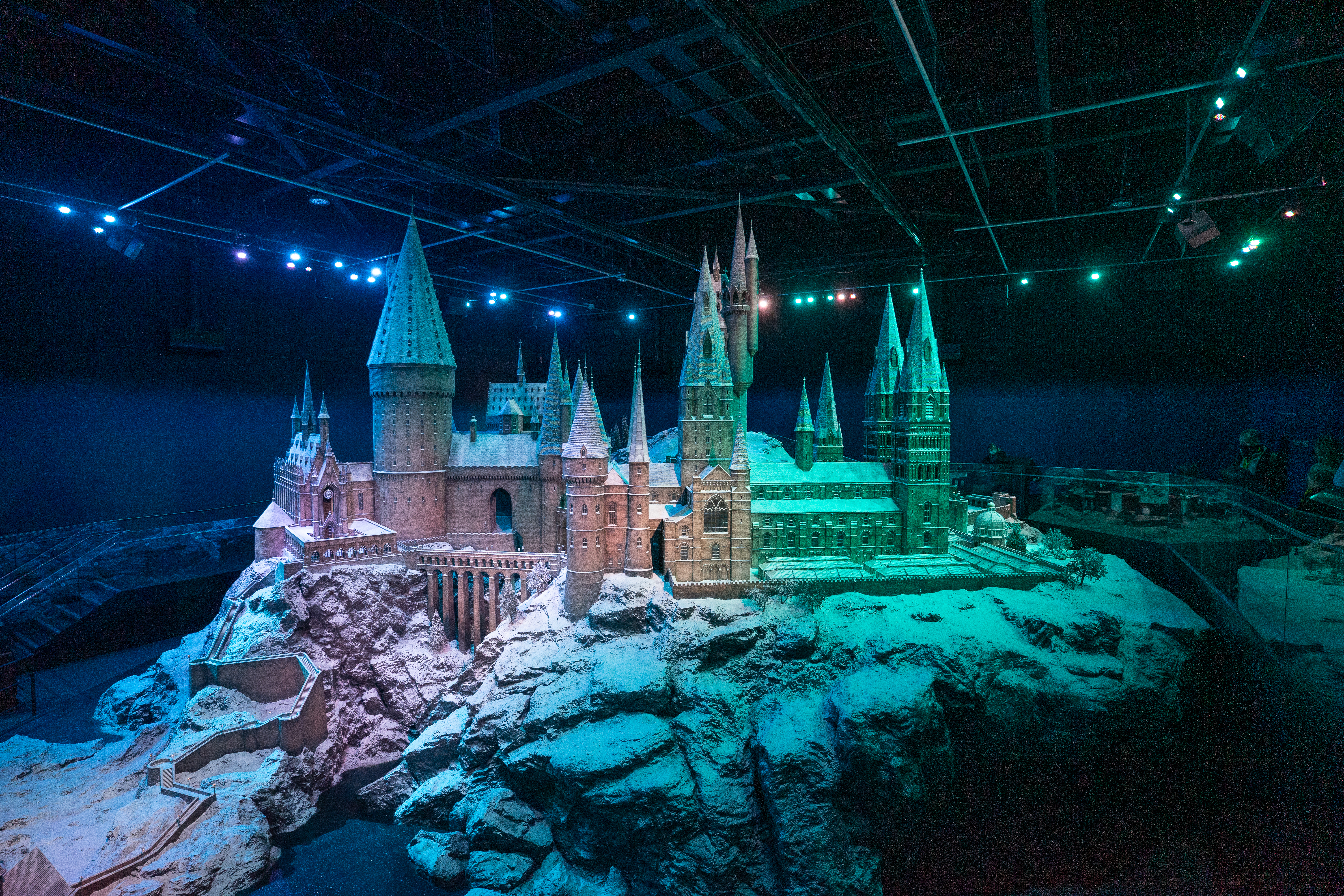|
Glencoe, Scotland
Glencoe or Glencoe Village (Gaelic: ''A’ Chàrnaich'') is the main settlement in Glen Coe in the Lochaber area of the Scottish Highlands. It lies at the north-west end of the glen, on the southern bank of the River Coe where it enters Loch Leven (a salt-water loch off Loch Linnhe). The village falls within the Ross, Skye and Lochaber part of the Highland council area for local government purposes. It is part of the registration county of Argyll and the lieutenancy area of Inverness for ceremonial functions. The use of the term "Glencoe Village" is a modern one, to differentiate the settlement from the glen itself. History The village is on the site of the Massacre of Glencoe in 1692, in which 38 members of the Clan MacDonald of Glencoe were killed by forces acting on behalf of the government of King William III following the Glorious Revolution. Treachery was involved, since the Clan had fed the soldiers and given them shelter for nearly two weeks before they turned on t ... [...More Info...] [...Related Items...] OR: [Wikipedia] [Google] [Baidu] |
Highland (council Area)
Highland (, ; ) is a council areas of Scotland, council area in the Scottish Highlands and is the largest local government area in both Scotland and the United Kingdom. It was the 7th most populous council area in Scotland at the United Kingdom Census 2011, 2011 census. It has land borders with the council areas of Aberdeenshire, Argyll and Bute, Moray and Perth and Kinross. The wider upland area of the Scottish Highlands after which the council area is named extends beyond the Highland council area into all the neighbouring council areas plus Angus, Scotland, Angus and Stirling (council area), Stirling. The Highland Council is based in Inverness, the area's largest settlement. The area is generally sparsely populated, with much of the inland area being mountainous with numerous lochs. The area includes Ben Nevis, the highest mountain in the British Isles. Most of the area's towns lie close to the eastern coasts. Off the west coast of the mainland the council area includes some ... [...More Info...] [...Related Items...] OR: [Wikipedia] [Google] [Baidu] |
Lieutenancy Areas Of Scotland
The lieutenancy areas of Scotland are the areas used for the ceremonial lord-lieutenants, the British monarch, monarch's representatives, in Scotland. The lord-lieutenants' titles chosen by the British monarch, monarch and his legal advisers are mainly based on placenames of the traditional counties of Scotland. In 1794, permanent lieutenancies were established by Warrant (law), Royal Warrant. By the Militia Act 1797 (37 Geo.3, C.103), the lieutenants appointed "for the Counties, Stewartries, Cities, and Places" were given powers to raise and command County Militia Units. While in their lieutenancies, lord lieutenants are among the few individuals in Scotland officially permitted to fly Royal Banner of Scotland, a banner of the Royal Arms of Scotland, the "Lion Rampant" as it is more commonly known. Lieutenancy areas are different from the current local government of Scotland, local government council areas and their committee areas. They also differ from other subdivisions of Sc ... [...More Info...] [...Related Items...] OR: [Wikipedia] [Google] [Baidu] |
Harry Potter And The Prisoner Of Azkaban (film)
''Harry Potter and the Prisoner of Azkaban'' is a 2004 fantasy film directed by Alfonso Cuarón from a screenplay by Steve Kloves. It is based on the 1999 novel ''Harry Potter and the Prisoner of Azkaban'' by J. K. Rowling. It is the sequel to ''Harry Potter and the Chamber of Secrets (film), Harry Potter and the Chamber of Secrets'' (2002) and the third instalment in the Harry Potter (film series), ''Harry Potter'' film series. The film stars Daniel Radcliffe as Harry Potter (character), Harry Potter, alongside Rupert Grint and Emma Watson as Harry's best friends Ron Weasley and Hermione Granger respectively. It chronicles Harry's third year at Hogwarts and his quest to uncover the truth about his past, including the connection recently-escaped Places in Harry Potter, Azkaban prisoner Sirius Black has to Harry and his deceased parents. With this film, the ''Harry Potter'' series switched to a longer eighteen-month production cycle. Cuarón was selected as director from a list t ... [...More Info...] [...Related Items...] OR: [Wikipedia] [Google] [Baidu] |
Rick Steves
Richard John Steves Jr. (born May 10, 1955), known professionally as Rick Steves, is an American travel writer, activist, and television personality. His travel philosophy encourages people to explore less-frequented areas of destinations and to become immersed in the local people's way of life. Starting in 2000, he hosted ''Rick Steves' Europe'', a travel series on public television. Steves also has a public broadcasting, public radio travel show called ''Travel with Rick Steves'' (2005−present) and has authored numerous travel guides, the first of which was the popular ''Europe Through the Back Door''. In 2006, he became a Print syndication, syndicated newspaper columnist, and in 2010, his company released a mobile phone application called "Rick Steves’ Audio Europe" containing self-guided walking tours and geographic information. Early life and career Richard John Steves Jr. was born in Barstow, California, to parents Richard John Steves Sr., a high school band director ... [...More Info...] [...Related Items...] OR: [Wikipedia] [Google] [Baidu] |
Henderson Stone
The Henderson Stone (''Clach Eanruig'' in Scottish Gaelic) is a granite boulder in a field in the Glencoe (Carnoch) area of Scotland. ''Clach Eanruig'' is translated alternatively as Henderson Stone or Henry's Stone.''Argyll Ordnance Survey Name Book, Argyll'' vol. 49 at 19 (1868-1878) (''Clach Eanruig'': “This well known name is applied to a granite boulder about 3 ½ feet in height, situated in a field a little south of Carnach, and deriving this appellation from the tradition that one of the soldiers named Henderson or Henry, billeted with a family in the above village, took one of its members to this stone, the night previous to the Massacre (of Glencoe (1692), and addressing it, gave warning of the approaching danger, his companion understanding, sav ... [...More Info...] [...Related Items...] OR: [Wikipedia] [Google] [Baidu] |
Massacre Of Glencoe Monument
The Massacre of Glencoe Monument is a memorial to the Massacre of Glencoe (Scottish Gaelic language, Scottish Gaelic: ''Mort Ghlinne Comhann''), which took place in Glen Coe in the Highlands of Scotland on 13 February 1692, following the Jacobism, Jacobite uprising of 1689–92. Sculpted by Alexander Macdonald and Co. of Aberdeen in 1883, a tapering 18-foot granite Celtic cross soars up from a rugged cairn above the river in Upper Carnoch. Its design is based on the elaborate Gosforth Cross. An annual wreath-laying ceremony is held at the Monument to commemorate those who fell in the massacre. References External links * Donaldson, M.E.M.,MacDonald Monument, Glencoe Village, Am Baile: highland history and culture, ambaile.org.uk (retrieved 29 Oct 2019): monument photograph from first half of 20th century. [...More Info...] [...Related Items...] OR: [Wikipedia] [Google] [Baidu] |
Clachaig Inn
The Clachaig Inn is a hotel and pub in Glen Coe, Lochaber, Highland, Scotland. It is popular with walkers and climbers who come to visit the surrounding mountains. The inn is sited towards the western end of the glen at , about southeast of the modern Glencoe village, on the old road just to the north of the A82 trunk road. It lies at the foot of Clachaig Gully, a precarious descent route to the west of the Aonach Eagach ridge, and faces across the glen to the starkly vertical western shoulder of Bidean nam Bian. The inn, dating back to the 16th century, more recently has a sign on its door saying "No hawkers or Campbells" in a wry reference to the Massacre of Glencoe which happened in Glencoe village. The village lay near the inn at the time of the massacre, but has since been relocated further west. Nowadays the Clachaig Inn has three bars, serves food and has accommodation. Sets for ''Made of Honour'' and the third ''Harry Potter'' film, ''Harry Potter and the Prisoner ... [...More Info...] [...Related Items...] OR: [Wikipedia] [Google] [Baidu] |
Scottish Episcopal Church
The Scottish Episcopal Church (; ) is a Christian denomination in Scotland. Scotland's third largest church, the Scottish Episcopal Church has 303 local congregations. It is also an Ecclesiastical province#Anglican Communion, ecclesiastical province of the Anglican Communion. A continuation of the episcopalian "Church of Scotland" as intended by James VI, and as it was from Stuart Restoration, the Restoration of Charles II of England, Charles II to the re-establishment of Presbyterianism in Scotland following the Glorious Revolution, it recognises the archbishop of Canterbury of the Church of England as president of the Anglican Instruments of Communion, but without jurisdiction in Scotland ''per se (Latin), per se''. Additionally, while the British monarch holds the title of Supreme Governor of the Church of England, in Scotland the monarch maintains private links to both the Presbyterian Church of Scotland and the Scottish Episcopal Church. The church is led by a Primus, who is ... [...More Info...] [...Related Items...] OR: [Wikipedia] [Google] [Baidu] |
Belford Hospital
Belford Hospital, locally known as The Belford, is a rural general hospital in Fort William, Lochaber, Scotland. It is managed by NHS Highland. History The original hospital, which was financed by a legacy from Andrew Belford and designed by Henry Burrell, opened in 1865. A prefabricated hospital for fever patients was erected in the grounds in 1893 but, after it burnt down in 1900, was replaced by a more permanent structure in 1901. The main facility was extended following a donation by Balfour Beatty in 1928. After the existing facility proved inadequate, a new hospital, which was designed by Joseph Gleave and built by Arnott Macleod, was officially opened by Princess Margaret and the Earl of Snowdon in April 1965. When the Scottish Executive looked at reorganising rural health care in 2004 there were clear reasons put forward to retain provision of an emergency service at the Belford. Following this there were calls to work more closely with the Lorn and Islands Hospital ... [...More Info...] [...Related Items...] OR: [Wikipedia] [Google] [Baidu] |
Ainmean-Àite Na H-Alba
Ainmean-Àite na h-Alba (; "Gaelic Place-Names of Scotland") is the national advisory partnership for Gaelic place names in Scotland. Ainmean-Àite na h-Alba are based at Sabhal Mòr Ostaig on Skye. History Ainmean-Àite na h-Alba began as the Gaelic Names Liaison Committee, established in 2000 by the Ordnance Survey to improve consistency in Gaelic names on their mapping products. The committee expanded to become the Ainmean-Àite na h-Alba partnership in 2006. Functions Ainmean-Àite na h-Alba research and agree on place names, using local knowledge, historical sources and the principles of the Gaelic Orthographic Conventions. These names are used by local councils, roads authorities and the Ordnance Survey for signs and maps. AÀA are also producing a National Place-Names Database. This database was launched in August 2010, and contains over 3000 entries. Partnerships The partners are Argyll and Bute Council, Bòrd na Gàidhlig, Comhairle nan Eilean Siar, Highlands and I ... [...More Info...] [...Related Items...] OR: [Wikipedia] [Google] [Baidu] |
Glorious Revolution
The Glorious Revolution, also known as the Revolution of 1688, was the deposition of James II and VII, James II and VII in November 1688. He was replaced by his daughter Mary II, Mary II and her Dutch husband, William III of Orange (William III and II), a nephew of James who thereby had an interest to the throne irrespective of his marriage to his cousin Mary. The two ruled as joint monarchs of Kingdom of England, England, Kingdom of Scotland, Scotland, and Kingdom of Ireland, Ireland until Mary's death in 1694, when William became ruler in his own right. Jacobitism, the political movement that aimed to restore the exiled James or his descendants of the House of Stuart to the throne, persisted into the late 18th century. William's invasion was the last successful invasion of England. Despite his own Catholicism, usually an impediment to Protestant support, James became king in February 1685 with widespread backing from the Protestant majorities in England and Scotla ... [...More Info...] [...Related Items...] OR: [Wikipedia] [Google] [Baidu] |
William III Of England
William III (William Henry; ; 4 November 1650 – 8 March 1702), also known as William of Orange, was the sovereign Prince of Orange from birth, Stadtholder of County of Holland, Holland, County of Zeeland, Zeeland, Lordship of Utrecht, Utrecht, Guelders, and Lordship of Overijssel, Overijssel in the Dutch Republic from 1672, and List of English monarchs, King of England, Monarchy of Ireland, Ireland, and List of Scottish monarchs, Scotland from 1689 until his death in 1702. He ruled Great Britain and Ireland with his wife, Queen Mary II, and their joint reign is known as that of William and Mary. William was the only child of William II, Prince of Orange, and Mary, Princess Royal and Princess of Orange, Mary, Princess Royal, the daughter of King Charles I of England, Scotland, and Ireland. His father died a week before his birth, making William III the prince of Orange from birth. In 1677, he Cousin marriage, married his first cousin Mary, the elder daughter of his maternal u ... [...More Info...] [...Related Items...] OR: [Wikipedia] [Google] [Baidu] |





